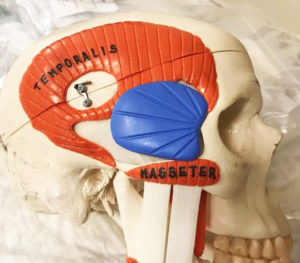The one permanent and often most effective treatment for temporal hollowing is an implant approach. Temporal implants offer a smooth and volume-assured method for building out the anterior temporal aesthetic zone next to the eye. Of all the facial implants, it is the only one that augments muscle, not bone, and is very straightforward to perform.


Several styles of temporal implants exist including the standard style (seen above on the model) at the extended style which is vertically longer and extends all the way p to the forehead. (anterior temporal line) The style of temporal implant used depends on the extent of the temporal hollowing. Regardless of the implant style chosen the incisional length and location as well as the subfascial placement remain the same.
Subfascial implant placement has no adverse effect on temporalis muscle function. (mouth opening and closing) Also its subfascial dissection and implant placement has no risk of facial nerve dysfunction and the frontal branch runs toward the forehead above the fascia.
Dr. Barry Eppley
Indianapolis, Indiana


